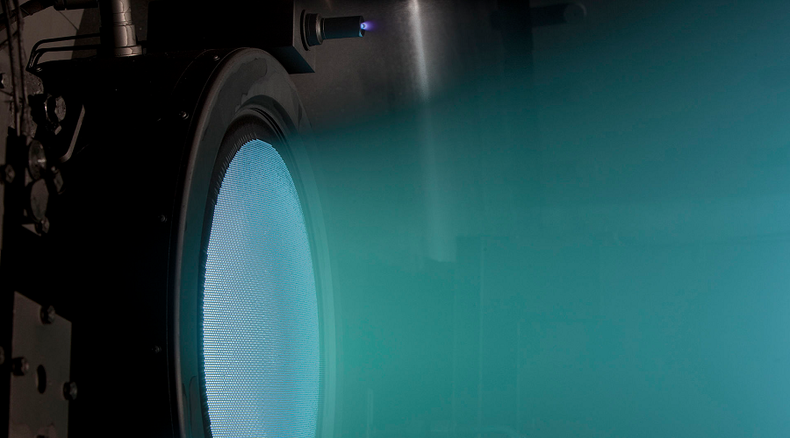Australian student’s ion space drive reportedly beats NASA’s fuel efficiency record

Space engines might soon become far more resourceful: An Australian PhD student has claimed to have beaten NASA’s fuel efficiency record and developed a new type of ion space drive that can use a variety of metals, even those found in space junk, as fuel.
University of Sydney doctoral candidate in Physics, Paddy Neumann, has developed a “new kind of ion space drive” that outperforms NASA’s in fuel efficiency, according to student newspaper Honi Soit. While Neumann’s technology is not that efficient in acceleration, it could potentially be used for the transportation of cargo over long distances in space.
The research, which is yet to be published in a peer-reviewed magazine, so far has been presented as a record breaking invention.
READ MORE: ‘Scientific bonanza’: New NASA images reveal Pluto’s giant ice mountains, hazy world
“The current record, held by NASA’s HiPEP system, allows 9600 (+/- 200) seconds of specific impulse,” the newspaper wrote. “However, results recorded by the Neumann Drive have been as high as 14,690 (+/- 2000), with even conservative results performing well above NASA’s best.”
NASA’s variation of the ion thruster (High Power Electric Propulsion, or HiPEP) was ground-tested in 2003 and was intended to be used on a mission of Jupiter Icy Moons Orbiter, that was canceled in 2005.
U. of Sydney student creates ion space drive more efficient than NASA's design :o http://t.co/eQegTG3WGG
— Lauren (@Shichahn) September 17, 2015The concept behind HiPEP is quite simple: The gas xenon is given an electrical charge or ionized. It is then electrically accelerated to a speed of about 30 km/second. When xenon ions are emitted at high speed, for example, as exhaust from a spacecraft, they push the spacecraft in the opposite direction. The ultimate speed a spacecraft can reach using ion thrust depends upon how much propellant it carries.
Neumann’s variation of the engine however uses metal as fuel, which is struck by electric arcs to produce ions that are focused by a magnetic nozzle. While magnesium allegedly showed the best results, Neumann’s drive can utilize a number of different metals, giving the drive a competitive advantage over similar technologies in terms of cost savings.
READ MORE: NASA delays first manned flight for its Mars spacecraft until 2023
“NASA’s HiPEP runs on Xenon gas, while the Neumann Drive can be powered on a number of different metals, the most efficient tested so far being magnesium,” the paper explains. “As it runs on metals commonly found in space junk, it could potentially be fuelled by recycling exhausted satellites, repurposing them into fresh fuel.”
Neumann is now seeking to patent the technology he has developed with Professors David McKenzie and Marcela Bilek. The team is expected to present their research at the 15th Australian Space Research Conference late this month.












